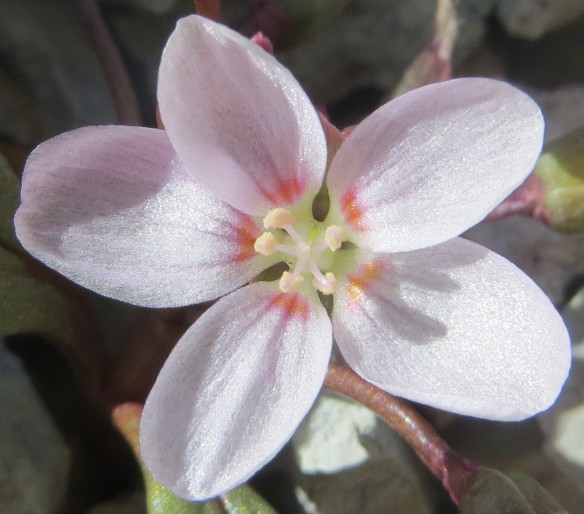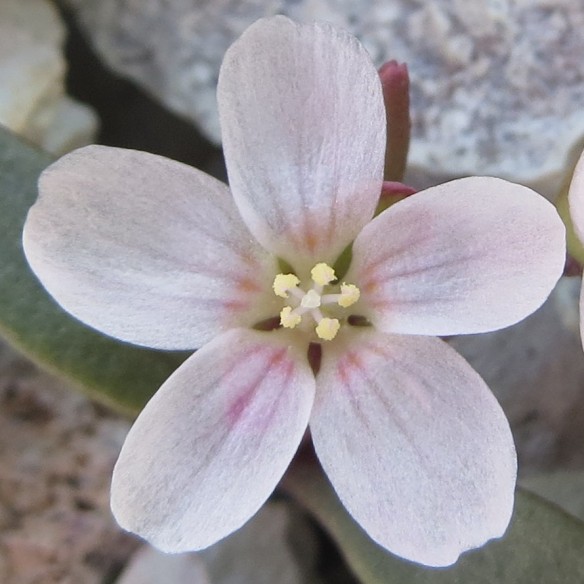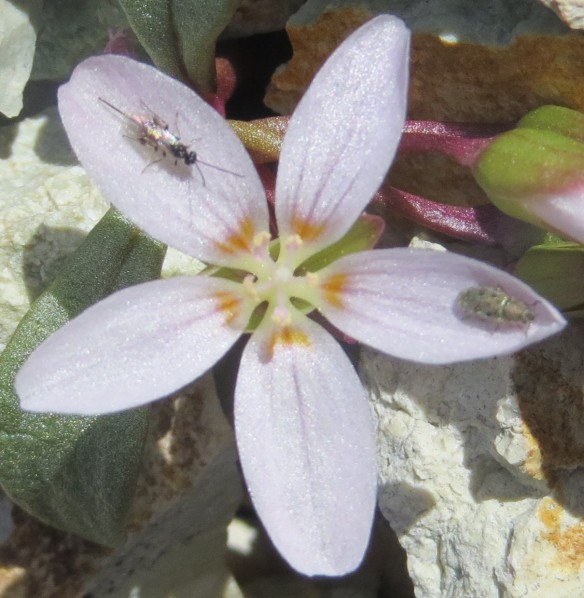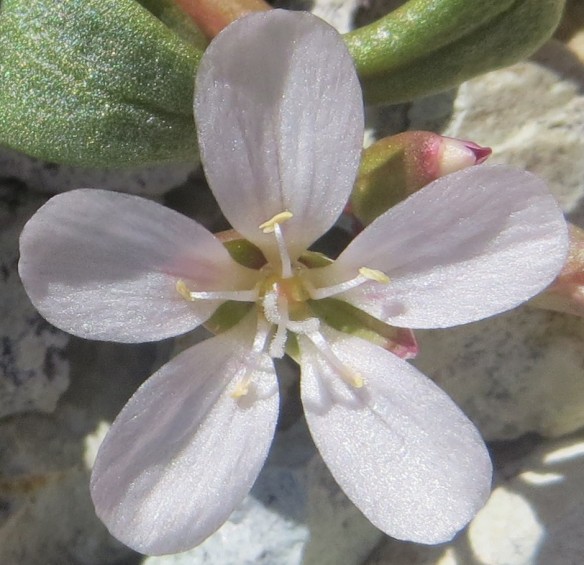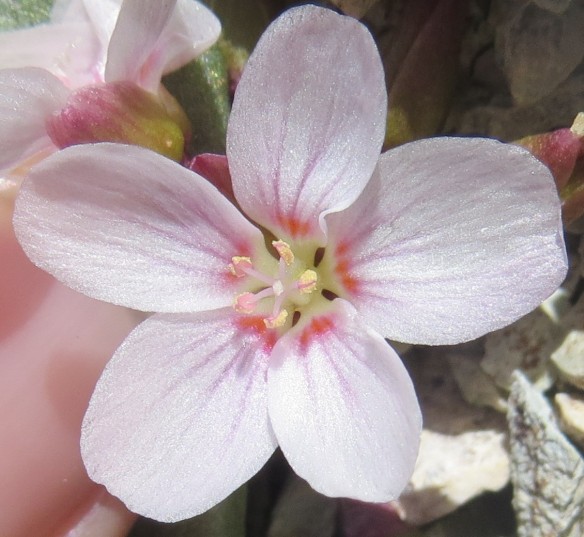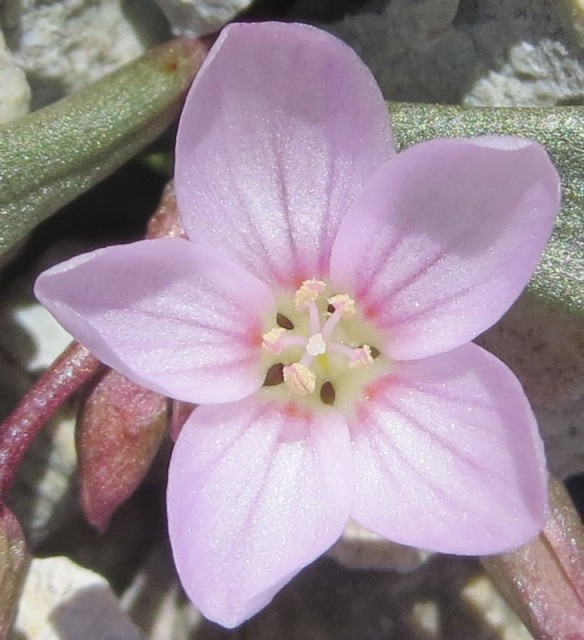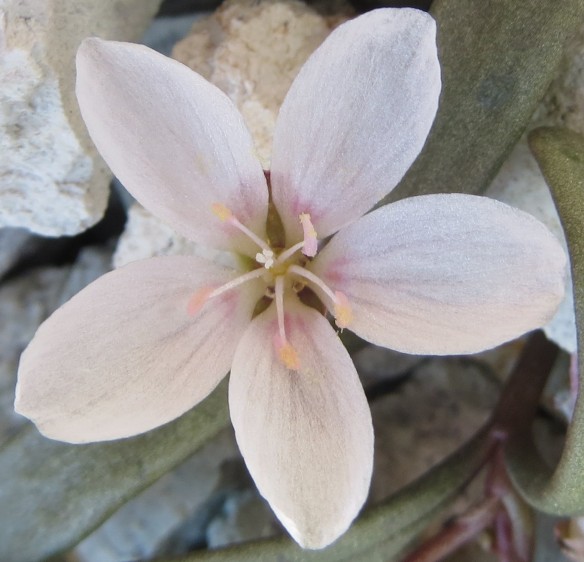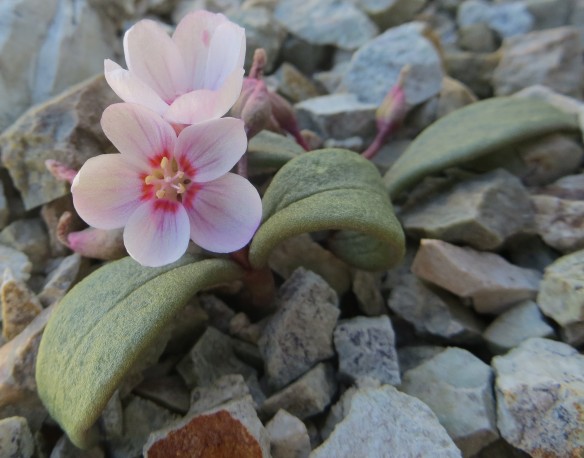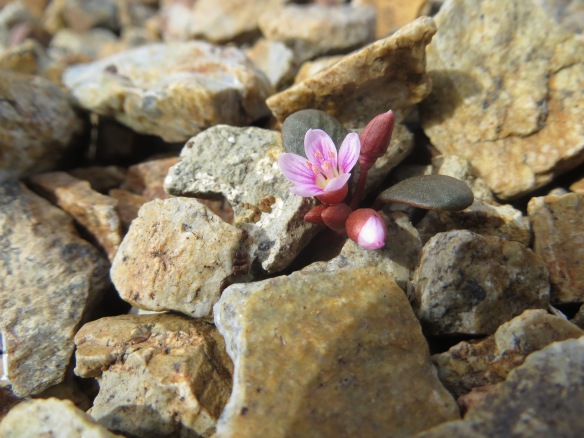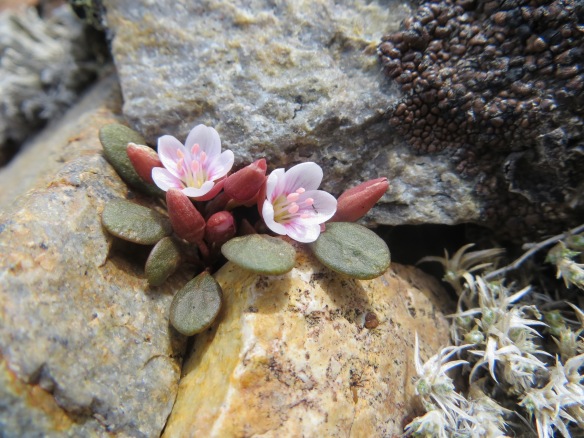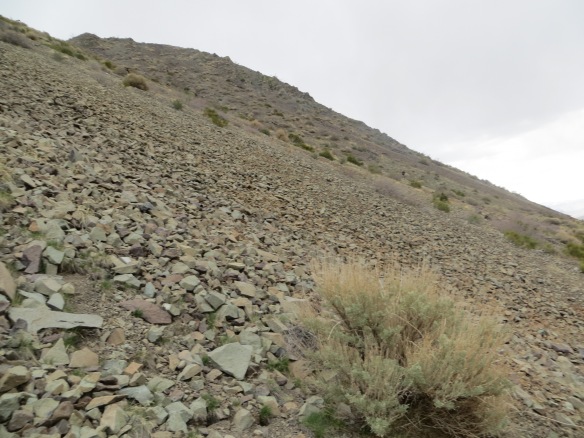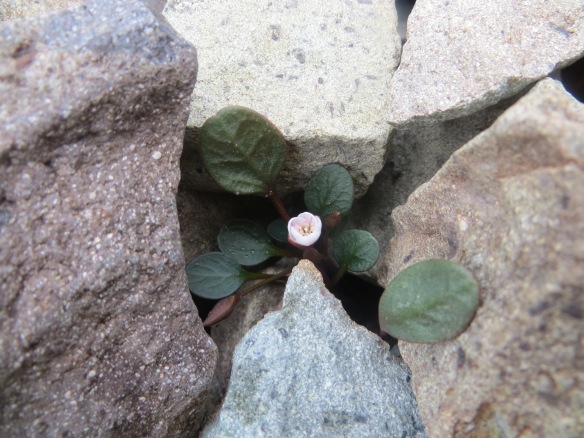
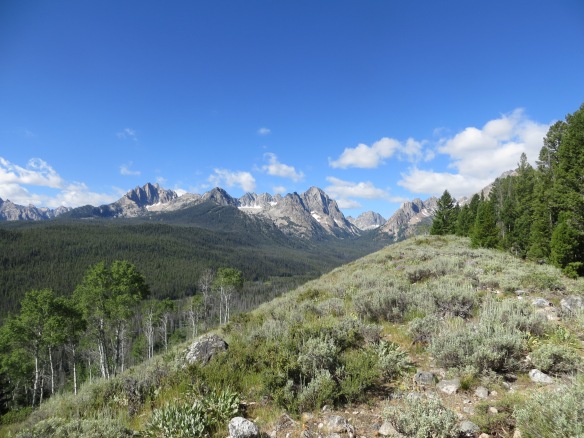 Hey, all — I wanted to share a short post with you, some links that detail my activities in the field over the last two weeks in Idaho and Montana. I’ve been on the hunt for Claytonia, Silene, Boechera and Androsace in alpine areas across these two states, including my new favorite mountain range, the Sawtooth Range (pictures above). At the end of this trip in Idaho and Montana I got my first ever glimpse of the alpine Claytonia megarhiza (pictures below) — I’m beginning to think I should have selected that species for a more thorough investigation… I suppose there is life after dissertation, so maybe this can be my next problem child. 😉
Hey, all — I wanted to share a short post with you, some links that detail my activities in the field over the last two weeks in Idaho and Montana. I’ve been on the hunt for Claytonia, Silene, Boechera and Androsace in alpine areas across these two states, including my new favorite mountain range, the Sawtooth Range (pictures above). At the end of this trip in Idaho and Montana I got my first ever glimpse of the alpine Claytonia megarhiza (pictures below) — I’m beginning to think I should have selected that species for a more thorough investigation… I suppose there is life after dissertation, so maybe this can be my next problem child. 😉
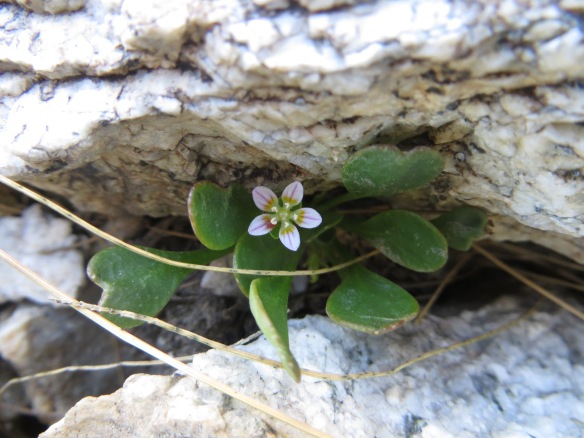
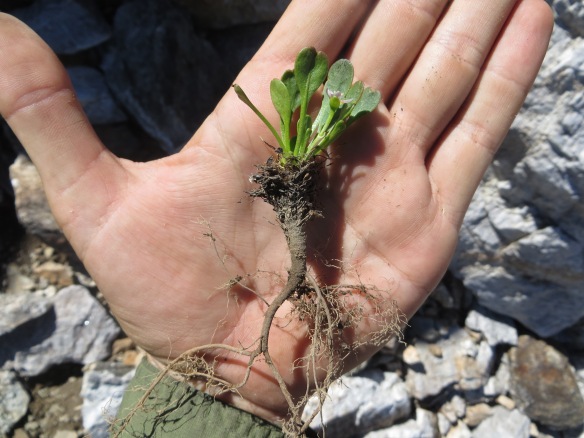 My collaborator, Ingrid Jordon-Thaden, and I have been to some pretty spectacular places (see links below), but it is only going to get better (I think) when we head north to the Yukon (Canada) following the 2014 Botany Conference. I look forward to keeping you all in the loop!
My collaborator, Ingrid Jordon-Thaden, and I have been to some pretty spectacular places (see links below), but it is only going to get better (I think) when we head north to the Yukon (Canada) following the 2014 Botany Conference. I look forward to keeping you all in the loop!
first update: https://experiment.com/u/0gYspQ
second update: https://experiment.com/u/pdFliA
third update: https://experiment.com/u/itzIEA

